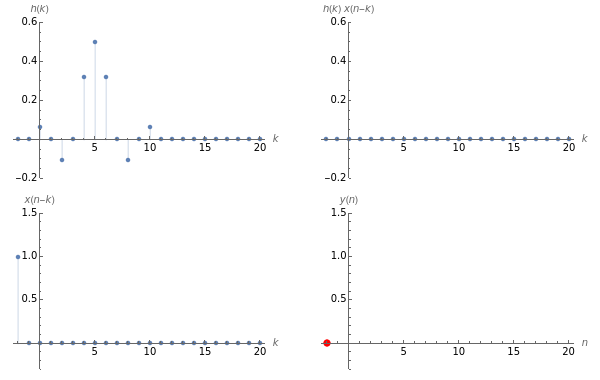Discrete-Time Convolution
Discrete-Time Convolution
The convolution of two discrete-time signals and is defined as
h(n)
x(n)
y(n)=h(n)⋆x(n)=h(k)x(n-k)
∞
∑
k=-∞
The left column shows and below over . The right column shows the product over and below the result over .
h(k)
x(n-k)
k
h(k)x(n-k)
k
y(n)
n
